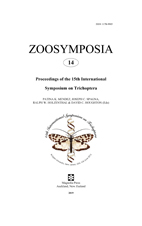Abstract
Student instruction is often segregated into specific subjects, giving the impression that different areas of study are largely unrelated. Teaching in “silos” inhibits the formation of connections among subjects. An academic curriculum that integrates DNA barcoding can expose students to a wide variety of scientific concepts, technical skills, problem solving, and fieldwork. In an approach that emphasizes conceptual interconnections, students are instructed in methods of caddisfly collection, specimen vouchering, DNA extraction, PCR amplification and sequencing of the COI barcode fragment, data curation in the Barcode of Life Data Systems (BOLD), and phylogenetic analysis. Accompanying development of these technical skills are learning objectives which include recognizing that DNA comes from real organisms and consists of molecules that are a physical part of those organisms, rather than being an obtuse symbolic abstraction. Students learn to logically pull together concepts from multiple scientific fields, use them in a practical setting, and experience science more broadly as a unified and interconnected discipline.

